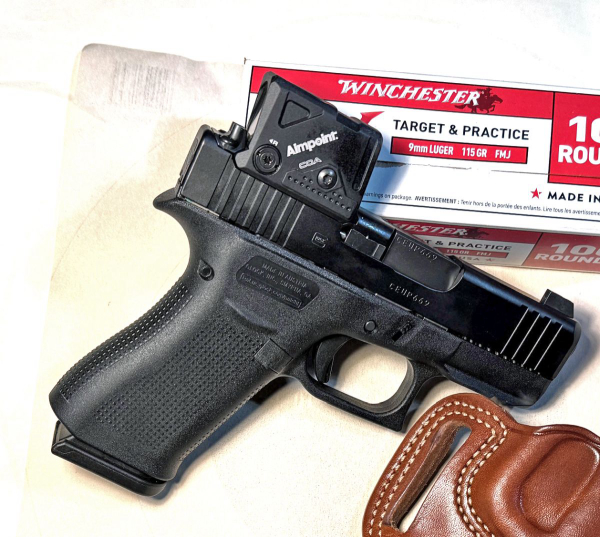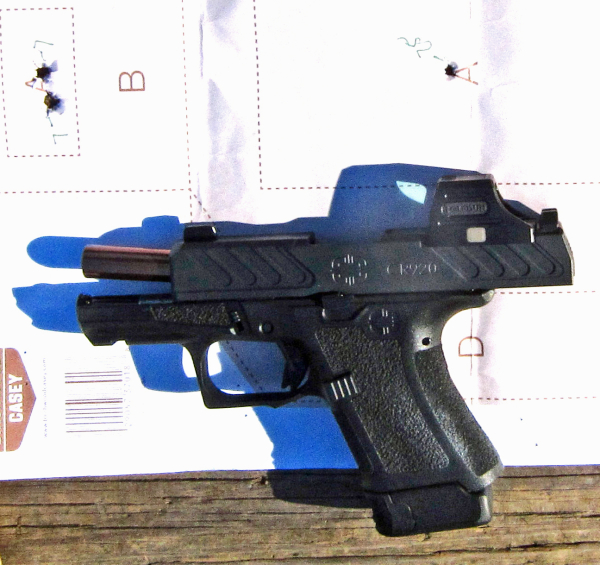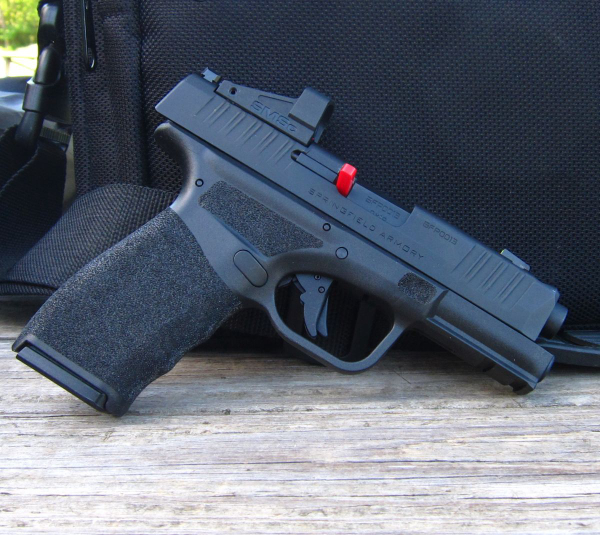The “GLOCK 43X COA – Range Exercises” piece, here, is the subject of a minor controversy.
In social media commentary, a couple of comments stood out. A commentator noted that the Aimpoint COA was big for compact guns and mentioned a near-analog. I didn’t see much difference, having both optics mounted on small pistols. I still don’t see that much difference – but it’s an opinion, which is fine, and not the subject of this note.

A relevant comment was along the lines of “is he for (pistol mounted optics) or against?”
Too many people get wrapped up in the “this versus that” fallacy. There’s no third option – or fourth or fifth – and there’s no likelihood that the question is irrelevant.
Or so it seems.
If you’re on an agency where PMOs are issued, it doesn’t matter if you are “for or against,” it’s not part of the reasoning. Similarly, if you’re in an agency where they’re prohibited, your thoughts on it don’t matter. There’s your “third option” – that you don’t matter.
You need to do what you need to do in order to get the job done. Frankly, the gear isn’t the focus. The job is.

Optics – and mounting options – are getting better, but it’s still “something else to fail,” in a range of ways. And the handgun is a reactive tool. Always worn, good only for imminent emergencies, it has to work. If you add a gizmo and fasteners to it, you had best be prepared for Murphy to arrive.
He will.
It’s your responsibility to check your gear, including fastening hardware, before you go out the door. If you don’t, choose irons and not optics.
If you have the choice.
While you’re at it, prepare in practice and training for a failed optic; not just “there’s no dot,” but “why is it not hitting where I’m looking” (a shifting zero) or “where did the sight go?” when fasteners fail.
It’s your problem and you added to it with stuff. Anytime you make a system more complex, you run into the possibility of operational failure. That’s just how it is.
Advantages? Sure. If you use sights to hit what you’re shooting at. If you don’t, that’s fine with me as long as you don’t “miss” on the street. That’s an “unintentional hit” on something else, possibly a tragic outcome.
As distance increases, the PMO really shines – as long as nothing goes wrong. The long shot operationally is the outlier. More often, the shot is from “entangled struggle” range to just a few feet. That doesn’t preclude the optic. It simply is a reflection of what we’re seeing.

When you’re trying to get a new shooter to understand the “wobble zone,” the arc of the sights moving over the target, the optic is in its element too. It more clearly demonstrates that if you look at the target, watch the reticle move over the target and put consistent pressure on the trigger, you’ll hit that target – somewhere. And you’ll notice, over time, that wobble zone shrinks -- a valuable lesson.
And the sights and mounting options are improving. They’ll soon be a standard like carbine optics. They’re just not there yet.
The next interesting comment was along the lines that if I shot using this one particular technique – the “correct method,” as determined by a practitioner – the shooting part would be fixed.
Sheep dip.
Show me someone who has their one special trademarked technique who never misses and I’ll show you someone who doesn’t shoot.
In fact, “front sight focus” versus “look at the target” is another binary fallacy. More appropriately, the issue of sighting and pointing constitutes a continuum – from sights (where you start to learn precision marksmanship) to target (where you can end up, in certain scenarios, if you work at it).
It’s more gaining familiarity and knowing where the muzzle is relative to the target without thinking about it. That takes some work and it’s worth doing.
It’s not magic; you can still miss. But anyone who says “do it this way or you’ll fail” is someone you should listen to cautiously.
It’s not either/or; it’s not one size fits all. There are just too many variables. If you read my features and seek the either/or answer, you’re looking in the wrong place. I try to fill in advantages and disadvantages so you can arrive at your own conclusions.
Consider that when you’re reading social media – or any of my stuff. I can miss options too.
— Rich Grassi